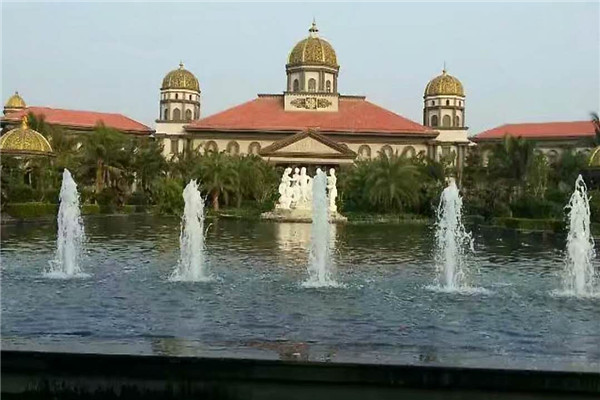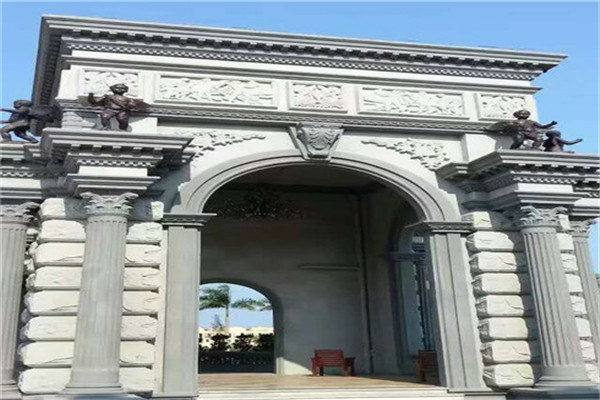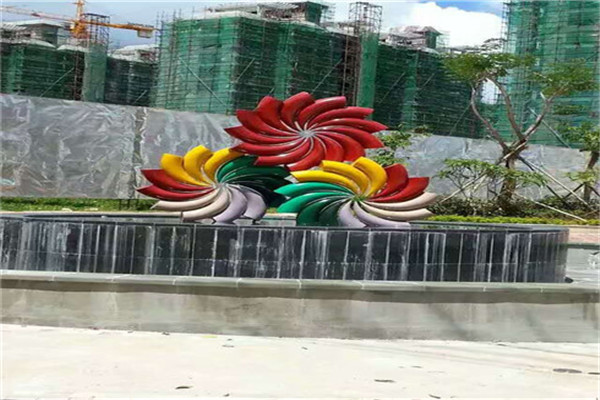
Sculpture art is a kind of plastic arts, also called sculpture, which is the general name of three creation methods of sculpture, carving and sculpture. It refers to the art of using various plastic materials (such as gypsum, resin, clay, etc.) or hard materials (such as wood, stone, metal, jade, agate, etc.) that can be carved or carved to create a visual and touchable artistic image with a certain space to reflect social life and express artists' aesthetic feelings, emotions, and ideals. It is diverse, so the law of development has different ups and downs. For example, the bronze ware manufacturing and decorative carving in the Yin and Zhou Dynasties in China were unmatched by future generations. The themes of the Han Dynasty's stone reliefs fully reflect the real life at that time. The sculptures in the Tang and Song dynasties certainly exceeded those in the Han Dynasty, but the works of the Tang and Song dynasties never fully reflected the reality as the Han Dynasty stone reliefs did. The handicraft industry and commerce in the Ming Dynasty were improved compared with those in the Tang and Song Dynasties, but few sculptures in the Ming Dynasty fully displayed the characteristics of each work as in the Song Dynasty. Although the sculpture of the Ming Dynasty is not as good as that of the Tang and Song Dynasties, other artistic achievements of the previous dynasties are naturally behind.

Sculpture refers to the ornamental and memorial objects that are carved to beautify the environment or for commemorative purposes, and have certain meanings, symbols or pictographs. Sculpture is a kind of plastic arts. It is also called sculpture, which is the general name of three creation methods: carving, carving and sculpture. It refers to the art of using various plastic materials (such as gypsum, resin, clay, etc.) or hard materials (such as wood, stone, metal, jade, agate, aluminum, glass fiber reinforced plastic, sandstone, copper, etc.) that can be carved or carved to create a visual and touchable artistic image with a certain space to reflect social life and express the artist's aesthetic feelings, emotions, and ideals. The lines can reduce the carved material through carving, while the plastic can achieve the purpose of artistic creation by adding plastic material.

At present, most of the most influential sculptures in China and the West are made of copper. For example, Rodin's "The Thinker", "The Bronze Age", and "The Statue of Liberty", the world's top sculptures are mostly made of copper. The lines are suitable for sculpture because of the texture, plasticity, unlimited specifications, and rich color texture of copper, which are also jade sculptures The effect that wood carving and stone carving can't achieve is that jade carving can only make very small works because of the limitation of materials. Because of the limitation of wood carving technology, there is no precedent for large outdoor sculptures. The inheritor, whose bronze carving has opened a new chapter in the 5000 year history of copper.

Bonsai sculpture is an ingenious combination of plant cultivation technology and garden art. It is an organic unity of landscape, basin and several frames. It is mainly composed of trees and shrubs, with rocks, people, buildings, etc. as the background, to show the beautiful scenery of giant trees in the wilderness, lush forests or ancient trees with thousands of years. There are evergreen pines and cypresses, such as five needle pine, black pine, larch, juniper, etc; Flowers and fruits include camellia, brome, June snow, longevity peach, fire thorn, pomegranate, etc; Miscellaneous trees include broad-leaved trees, shrubs such as elm, skeleton, etc. The miniature bonsai, which is the size of a wine cup, is planted in a basin with a wild state, exquisite and attractive plant shape. The cursive potted landscape refers to the shape of plants into a certain word, commonly used as elm with golden leaves, rose vine, etc. The chrysanthemum potted landscape is to use the small chrysanthemums grafted on Artemisia annua to twist the artemisia stem and form a vigorous tree trunk by manual traction; Modern green sculpture three-dimensional sculpture, also known as "three-dimensional painting", can enjoy different scenery from different angles and positions. There are combinations of rattan plants and buildings, such as green bridge columns, colorful landscape walls, etc. There are sculptures of grass and flowers, such as the charmingly naive giant panda, the beautiful peacock, the elephant with a long nose, the giraffe with a raised neck, flocks of cattle and sheep, monkeys playing on horseback, etc

The art of carving various patterns and images on stones, usually also refers to sculpture handicrafts carved from stones. Chinese stone carving can be divided into bluestone carving, marble carving, white marble carving, talc carving, black crystal stone carving, colored stone carving, pebble carving, etc. The bluestone carvings in Hui'an, Fujian, are famous for architectural decoration and stone lions. The mouth of the stone lion contains stone beads that roll freely, and is famous in Southeast Asia. The marble carving in Yunnan is made from the marble of Diancang Mountain. Its patterns are like colored mountains and rivers, or dangerous peaks and valleys, or waterfalls follow the clouds. The inlaid furniture is unique. The white marble carvings in Quyang, Hebei, Fangshan, Beijing and other places were mainly used for palace architectural decoration in the Ming and Qing dynasties, such as Huabiao, Shishi high quality Abstract sculpture Railings, etc; Modern times are used for decoration of public and memorial buildings, such as the Great Hall of the People, the Monument to the People's Heroes, Chairman Mao's Memorial Hall, etc. Talc carvings in Haicheng, Liaoning Province and Laizhou, Shandong Province use small and cute animals as traditional varieties. The carvings of black crystal stone in Dongkou, Hunan and Lichuan, Hubei are dark and bright. Caishi carving is mainly produced in Qingtian, Zhejiang, Shoushan, Fuzhou and Liuyang, Hunan. Pebble carvings are mainly produced in Lanzhou, Shenyang and other places. Baoting Abstract sculpture Stone carving techniques include intaglio (contour carving), shadow carving, relief, round carving (complete three-dimensional carving without any background), and openwork (also known as openwork). Shadow carving is a unique technique of Fujian Hui'an bluestone carving. It uses steel drills of different sizes to chisel on the bluestone, and uses the size, depth and density of the drill points to express the images of landscapes, birds, animals, people, flowers, etc.





